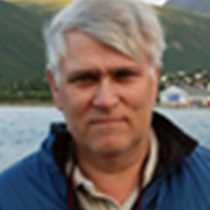Hornsund, Svalbard
Today was our first exploration and adventure day of the High Arctic or, as some say, the High Latitudes.
Last evening we set sail from the main settlement at Spitsbergen, Svalbard, from Longyearbyen. The town’s name dates back from the early 20th century as a wealthy businessman, a steel and coal entrepreneur from Michigan, made a tourist voyage along coastal Norway and included a short and brief stop at Spitsbergen. Very soon he, John Munro Longyear, was back to establish the first mining operation, in coal, and this became Longyearbyen. In 1916 he sold the company to Store Norske Kull Kompani and they are still today one of main employers at Svalbard.
Through the night the ship sailed slowly south heading for Hornsund, the most southern fjord along the west coast of Spitsbergen.
The name confusion about Svalbard and Spitsbergen is sometimes hard to understand. The group of islands was called Spitsbergen until they were annexed by Norway in 1925. Norway was using the old Icelandic Saga to prove the Norwegian heritage. “They sailed for two days and two nights and reached Svalbard.”
Svalbard means “cold land” and where actually the Vikings reached we will never know. Nowadays, the group of islands here in the north, are called Svalbard and the main island, the most westerly and largest, which Wilhelm Barents found in 1596 is now called Spitsbergen.
This morning we woke up entering the fjord Hornsund and spent the morning exploring the area from the ship. Our Expedition Leader upgraded us about practical issues for traveling in the far north, where we are now only about 600 nautical miles from the North Pole in the land of the extreme.
Very soon a report came from the bridge. The first polar bear had been spotted and soon we gathered on the bow as our captain took the ship extremely close to the shoreline. This was a sleepy summer bear at Hornsund, but once in a while it lifted its head to look around.
More surprising and thanks to our guest Marion, a second polar bear was found much closer to the ship! This bear really gave us all a lifetime experience; polar bears are supposed to be white, but this one was greenish brown! The Inuit has a saying that a polar bear can turn itself into anything to hide: a rock, a piece of ice… now we know green polar bears can be hiding anywhere, even colored to blend into vegetation.
This bear had spent its time through the summer here in Hornsund waiting for the ice and seals to come back, by sleeping in moss and grass. The color was greenish brown and it blended in perfectly into the vegetation patch it had chosen. Our Expedition Leader at recap made a comment about how hard it can be to spot a polar bear and this really showed how we all constantly have to be on high alert as we land anywhere.
After our first two polar bears, our captain took the ship into Burgerbukkta and approached the glacier front. The glacier had been very active through the last week and the whole fjord was filled with white and blue glacier ice. Soon the keen birders onboard were able to add a rare Arctic gull, the Ivory Gull, to their list. Between ice flows we saw plenty of the smaller auks (dovekies and black guillemots), and hundreds of Black-legged kittiwakes were resting on small “icebergs”.
After lunch, it was time to make our second landfall on Spitsbergen, at Gåshamna (Goose Harbour). This is really a geopolitical hot spot here at western Spitsbergen, because Dutch and English whalers used the bay in the 17th century, and Russian hunters (Pomors) used it as a base during the 18th and early 19th century. As we landed on the beach, a small trapper’s cabin still stands and reminded us about the Norwegian hunters who worked here at Svalbard, from about 1900 to 1973.
Soon, we had everybody ashore and groups divided to explore the area. A pile of bricks near the landing helped to tell the story about the exploration period here at Svalbard. An issue started in the late 17th century, as Newton publish his famous book Principa. According to his calculation, planet Earth would be flattened out near the Pole and already by the mid 18th century several French expeditions was sent out to confirm this, but the issue remained unproved.
During the years 1898 to 1903, the Swedish-Russian Arc Meridian Expedition aimed to measure the curvature of planet Earth by using the distance between the southern and northern tip of Spitsbergen. The Russians used Gåshamna as their base. The whole operation took them several summers and did, as expected by the science society, confirm Newton’s calculation. Real science is not foolproof, and it can only be improved by new and better models!
In the afternoon, we also got a chance to feel how cold northeastern winds from the frozen Arctic Ocean feel. The Zodiac operation was to some a joyful experience with big swells and spray. At least it confirmed that we are now in the land of the extreme and have to be prepared for anything.
Right before dinner we all gathered in the lounge for the Captain’s Welcome cocktail party and our captain introduced some of his fellow officers. We ended our first busy day with a great dinner and time to catch a few hours sleep through the 24 hours daylight for new adventures tomorrow!




